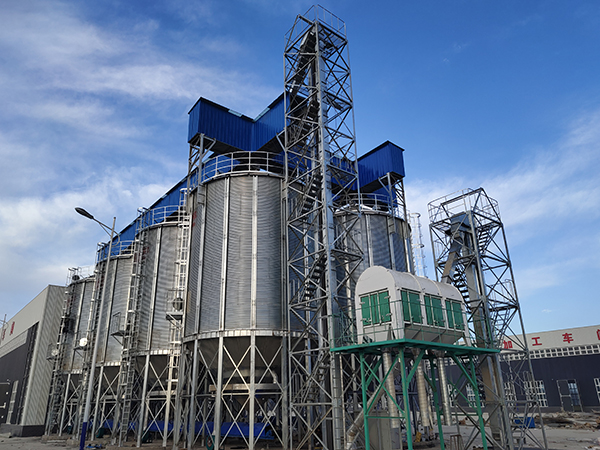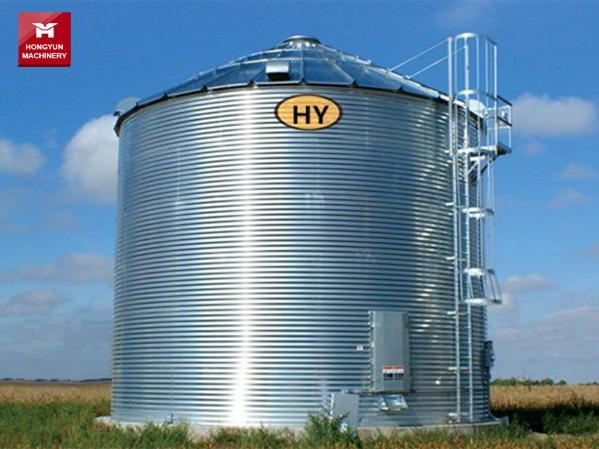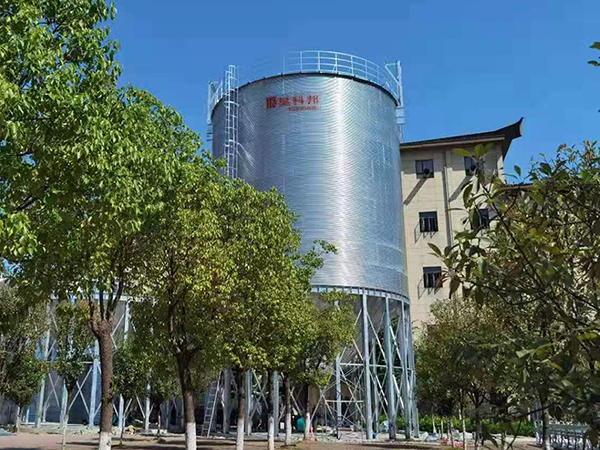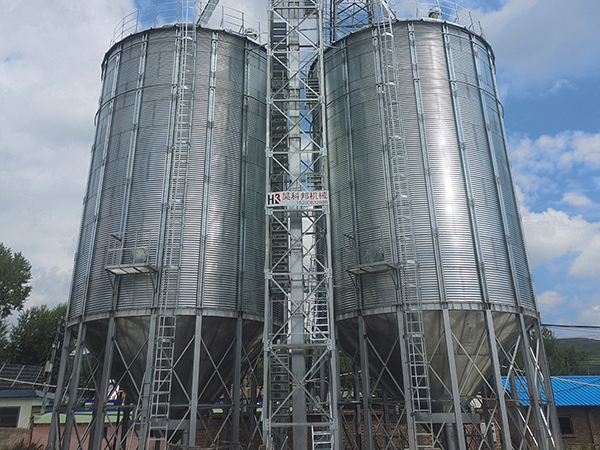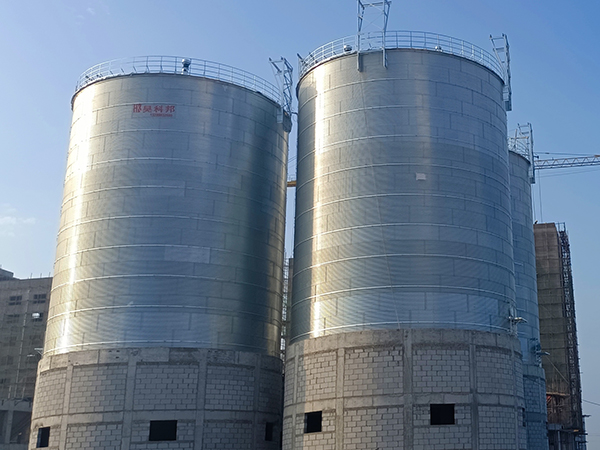corrugated silo
A corrugated silo is a specially designed storage facility typically used for storing grains, seeds, feed, and other granular materials. Its characteristic feature is the corrugated design of the silo walls, providing increased strength and stability while reducing material usage.
corrugated silo Introduction
A corrugated silo is a specially designed storage facility typically used for storing grains, seeds, feed, and other granular materials. Its characteristic feature is the corrugated design of the silo walls, providing increased strength and stability while reducing material usage. Corrugated silos are usually made of steel or galvanized steel plates, offering corrosion resistance and durability.
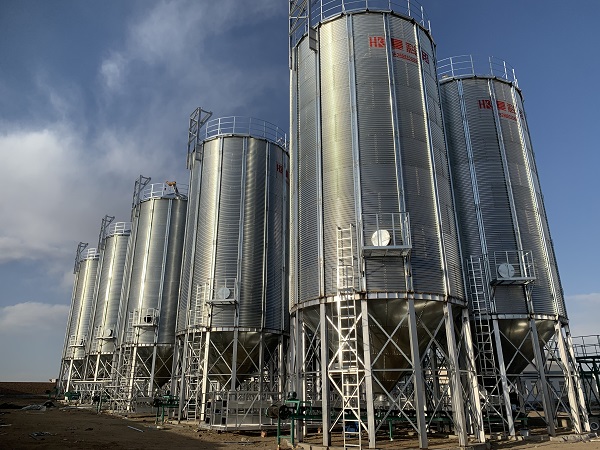
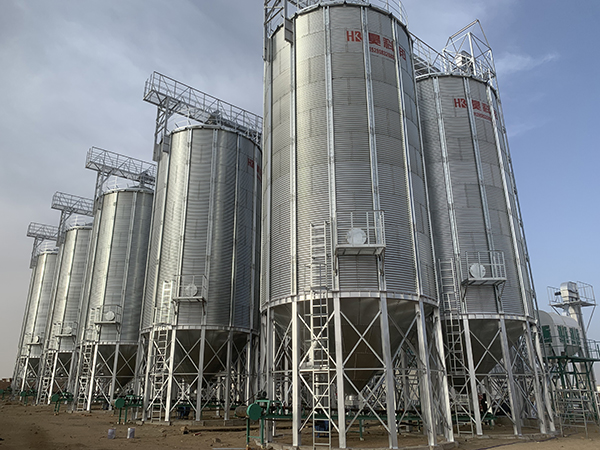
Functional characteristics of corrugated silo
Corrugated Design
The silo walls are constructed with a corrugated or wave-like pattern, which enhances the structural strength and stability of the silo while reducing material usage. This design also allows for better distribution of pressure and weight, making the silo more resistant to deformation and damage.
Material
Corrugated silos are typically made of steel or galvanized steel plates, which provide durability, corrosion resistance, and longevity. This ensures the silo can withstand harsh environmental conditions and provide long-term storage solutions.
Versatility
Corrugated silos are suitable for storing a wide range of granular materials, including grains, seeds, feed, fertilizers, and more. This versatility makes them valuable assets in agricultural, industrial, and commercial settings.
Easy Installation
Components of corrugated silos are often prefabricated and lightweight, making them easier to transport and install compared to traditional silos. This reduces installation time and labor costs.
Space Efficiency
The corrugated design allows for efficient use of space, maximizing storage capacity while minimizing the footprint of the silo. This makes them ideal for locations where space is limited.
Customization
Corrugated silos can be customized to meet specific storage requirements, including size, shape, and accessories such as ladders, platforms, and ventilation systems. This flexibility allows for tailored solutions to fit different needs and applications.
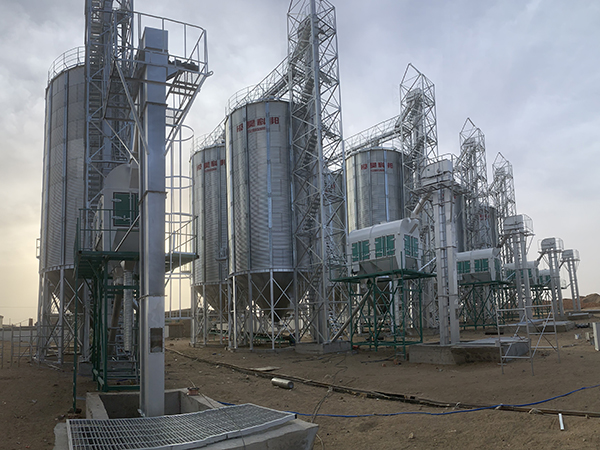
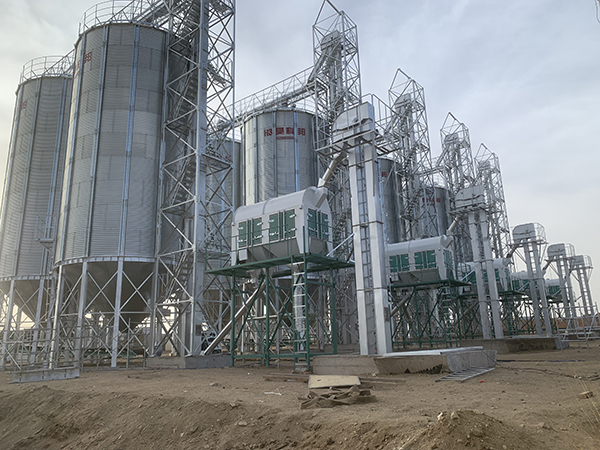
Structural design of corrugated silo
Silo Body Structure:
Corrugated Sheets: The walls of the silo are typically made of corrugated steel or galvanized steel sheets, which enhance the structural strength and stability of the silo.
Cylindrical Shape: Silos usually have a cylindrical shape, which helps evenly distribute loads and provides maximum storage capacity.
Foundation and Support Structures:
Foundation: Used to support the weight of the entire silo, typically constructed from concrete or steel.
Support Structures: Including columns, beams, and support frames, which support the vertical structure of the silo, ensuring its stability and robustness.
Roof and Protective Structures:
Roof: Typically made of weather-resistant steel or other corrosion-resistant materials to prevent rainwater and other external factors from infiltrating the material inside the silo.
Protective Structures: Including safety railings, access doors, and ventilation systems to ensure safety and proper ventilation inside the silo.
Unloading System:
Automatic Unloading Equipment: Typically consisting of conveyors, augers, or other mechanical devices for efficient and controlled discharge of materials from the silo.
Control Systems: Managing the operation of the unloading equipment to ensure smooth and safe material discharge.
Ventilation and Temperature Control Systems:
Ventilation Systems: Including vents, fans, and air ducts to maintain airflow and prevent moisture buildup inside the silo.
Temperature Control Systems: Utilizing sensors and heating elements to regulate the temperature inside the silo, preserving the quality of stored materials.
Monitoring and Control Systems:
Sensors and Monitoring Devices: Monitoring parameters such as temperature, humidity, and material levels to ensure optimal storage conditions.
Automated Control Systems: Controlling the operation of unloading, ventilation, and temperature control systems for efficient management of the silo.
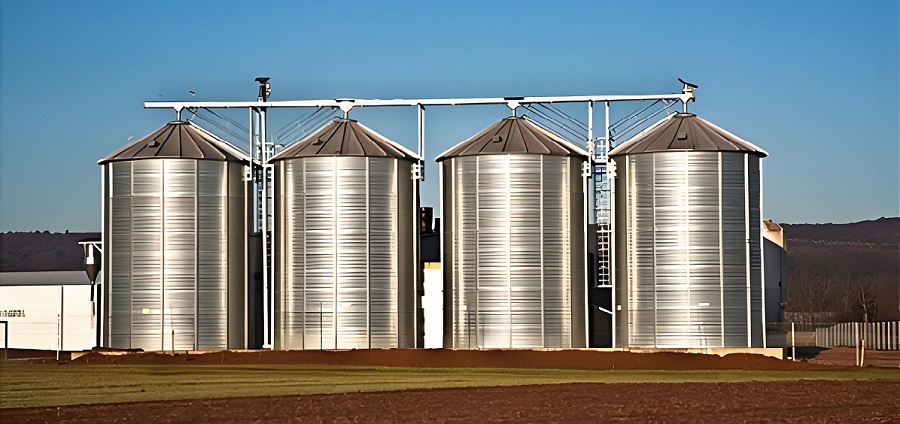
The main advantages of corrugated silo include
Strength and Stability
The corrugated design enhances the structural strength and stability of the silo, allowing it to withstand greater pressure and weight.
Material Savings
Compared to traditional flat-bottom silos, the corrugated design of silo walls reduces material usage while maintaining sufficient strength and stability.
Corrosion Resistance
Corrugated silos are typically made of galvanized steel plates or other corrosion-resistant materials, providing excellent corrosion resistance for long-term storage of various types of materials.
Easy Installation
Components of corrugated silos are usually lighter than those of traditional silos, making installation quicker and easier.
Wide Applicability
Corrugated silos are suitable for storing grains, seeds, feed, and other granular materials, widely used in agriculture, feed processing, seed processing, and other fields.
Application scope of corrugated silo
Coban steel silo is widely used for grain storage such as wheat, corn, soybean, paddy, rice, soybean meal, barley, malt, sunflower seeds, rapeseed, peanuts, flour, and other powder materials, oat, special Silo, and seeds, etc. Steel silo products include 100 ton, 300 ton, 500 ton, 1000 ton, 2000 ton, 3000 ton, 5000 ton and 10000 ton steel silo as well as metal silo, spiral silo and galvanized silo.

corrugated silo technical parameters
Scientifically speaking, the Silo capacity should be measured with volume (m3). Even in the same grain Silo, the storage tons will be different for different grains with different densities. The following table is calculated based on a Silo density of 0.75kg/m3, and surely HKB customizes Silo systems unique for you.
| Most Popular Hopper Bottom Steel Silo Technical Specifications | ||||||||
| Capacity | 50Ton | 100Ton | 150Ton | 200Ton | 300Ton | 500Ton | 1000Ton | 1500Ton |
| Model | TCZK
03605 |
TCZK
04507 |
TCZK
05507 |
TCZK
06406 |
TCZK
07307 |
TCZK
07313 |
TCZK
11010 |
TCZK
12811 |
| Diameter(m) | 3.667 | 4.584 | 5.500 | 6.417 | 7.334 | 7.334 | 11.000 | 12.834 |
| Total Height(m) | 9.56 | 12.53 | 13.25 | 12.85 | 14.70 | 21.42 | 20.95 | 23.51 |
| Volume(m³)
Density:0.75ton/m³ |
69 | 150 | 222 | 273 | 415 | 699 | 1346 | 2039 |
| Most Popular Flat Bottom Steel Silo Technical Specifications | ||||||||
| Capacity | 1000Ton | 1500Ton | 2000Ton | 2500Ton | 3000Ton | 5000Ton | 8000Ton | 10000Ton |
| Model | TCK
10014 |
TCK
11915 |
TCK
13715 |
TCK
15514 |
TCK
15518 |
TCK
18321 |
TCK
24718 |
TCK
25621 |
| Diameter(m) | 10.084 | 11.918 | 13.750 | 15.584 | 15.584 | 18.334 | 24.751 | 25.668 |
| Total Height(m) | 18.69 | 20.34 | 20.87 | 20.30 | 24.78 | 28.60 | 26.99 | 30.60 |
| Volume(m³)
Density: 0.75ton/m³ |
1335 | 2009 | 2701 | 2467 | 4145 | 6693 | 10879 | 13484 |
After-sale Service
- – HKB provides advanced grain safety storage technology to assure your grain silo 100% quality stability.
- – grain silo Quality guarantee is one year after installation and commissioning or 18 months after leaving China Port. Maturity is the first.
- – 7 days x 24 hours service, within 24 hours reply/solve of any technical issues upon request.
- – Routinely telephone track to remove all might be problems grain silo or issues guarantying the whole system grain silo long-lasting safety and reliability.
- – HKB will consider all other needs like customs clearance, sea delivery, insurance, customs tax benefit plan, documentation, etc. So our respected Users feel so relaxed and easy to get the grain silo system well.

